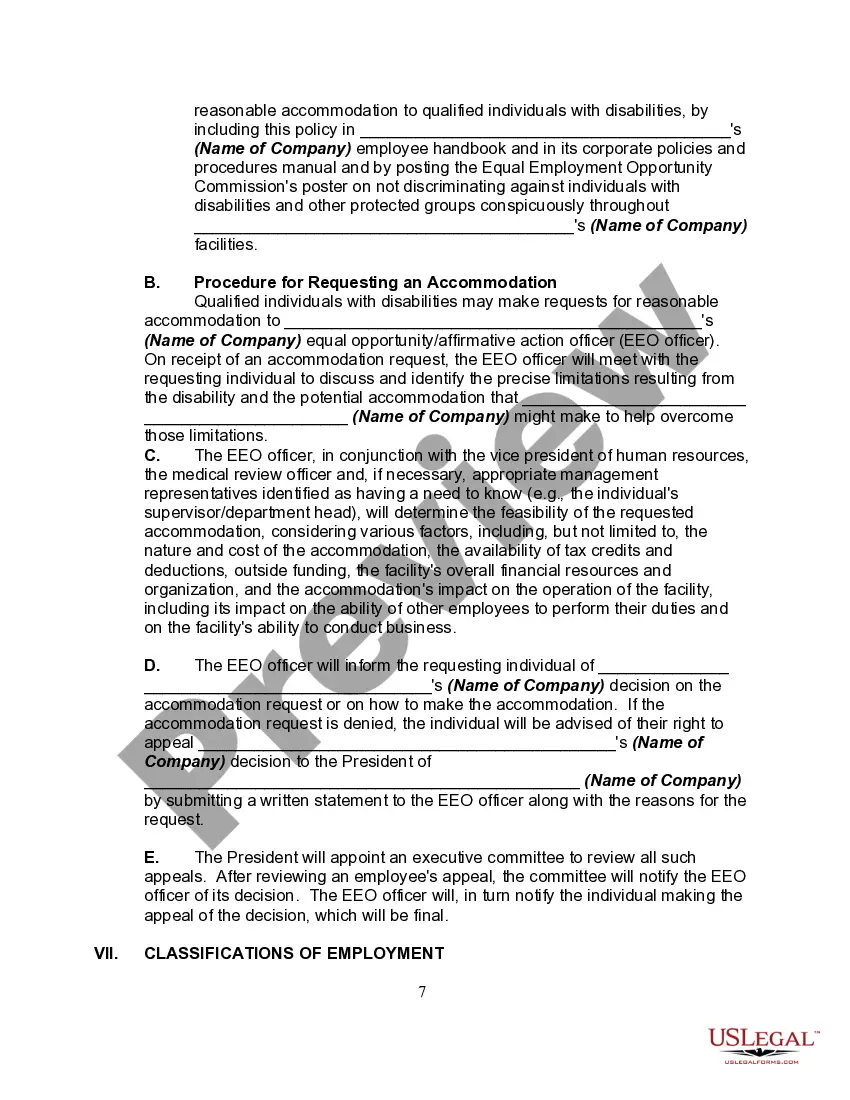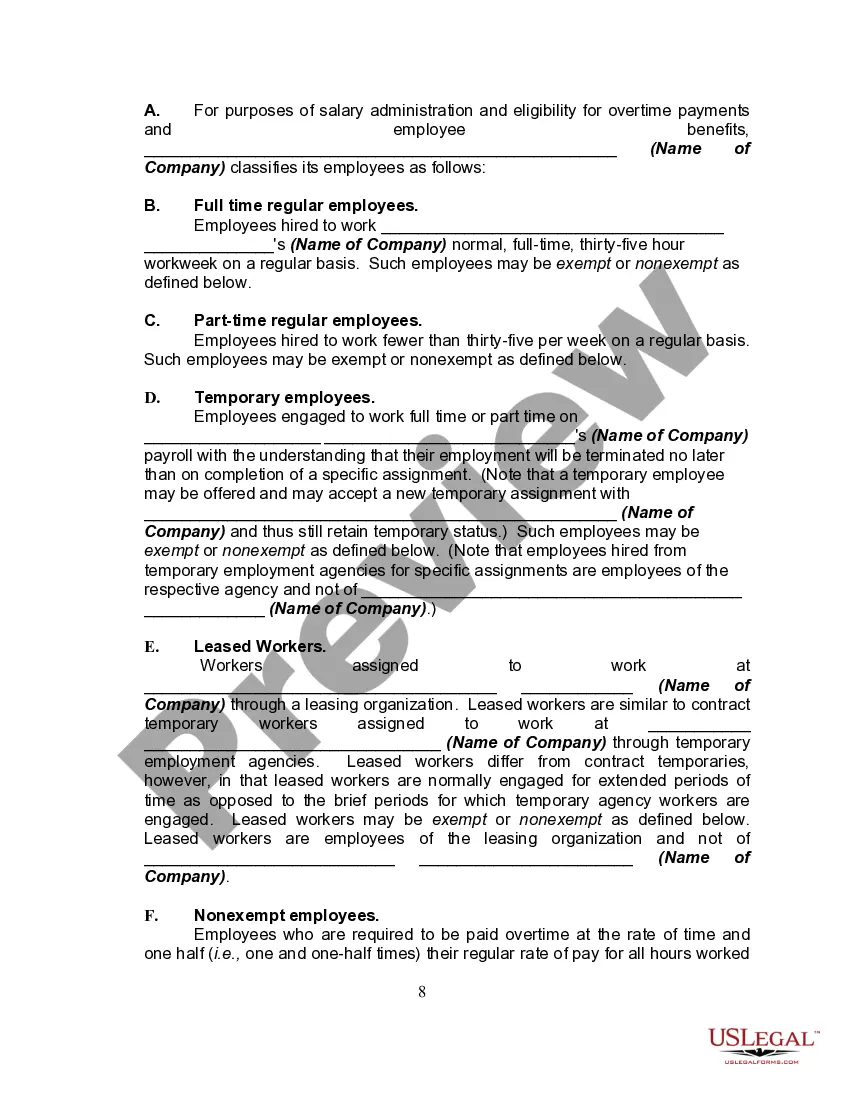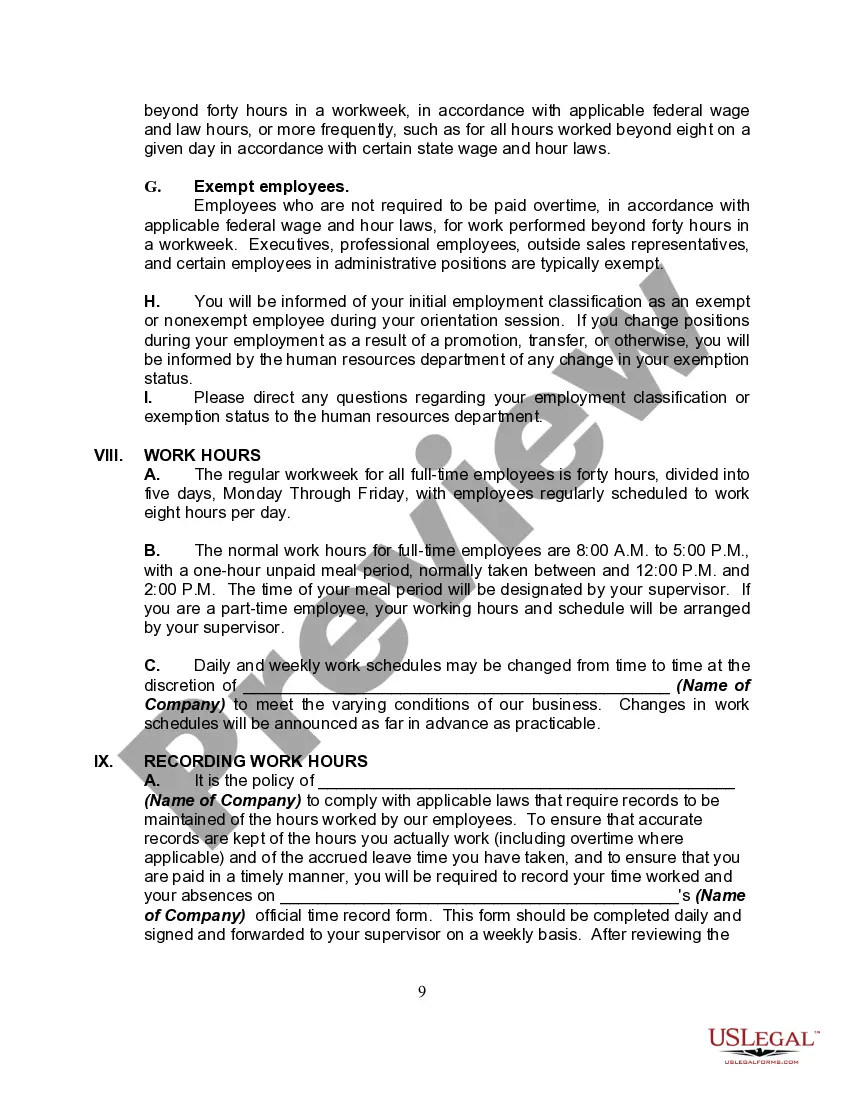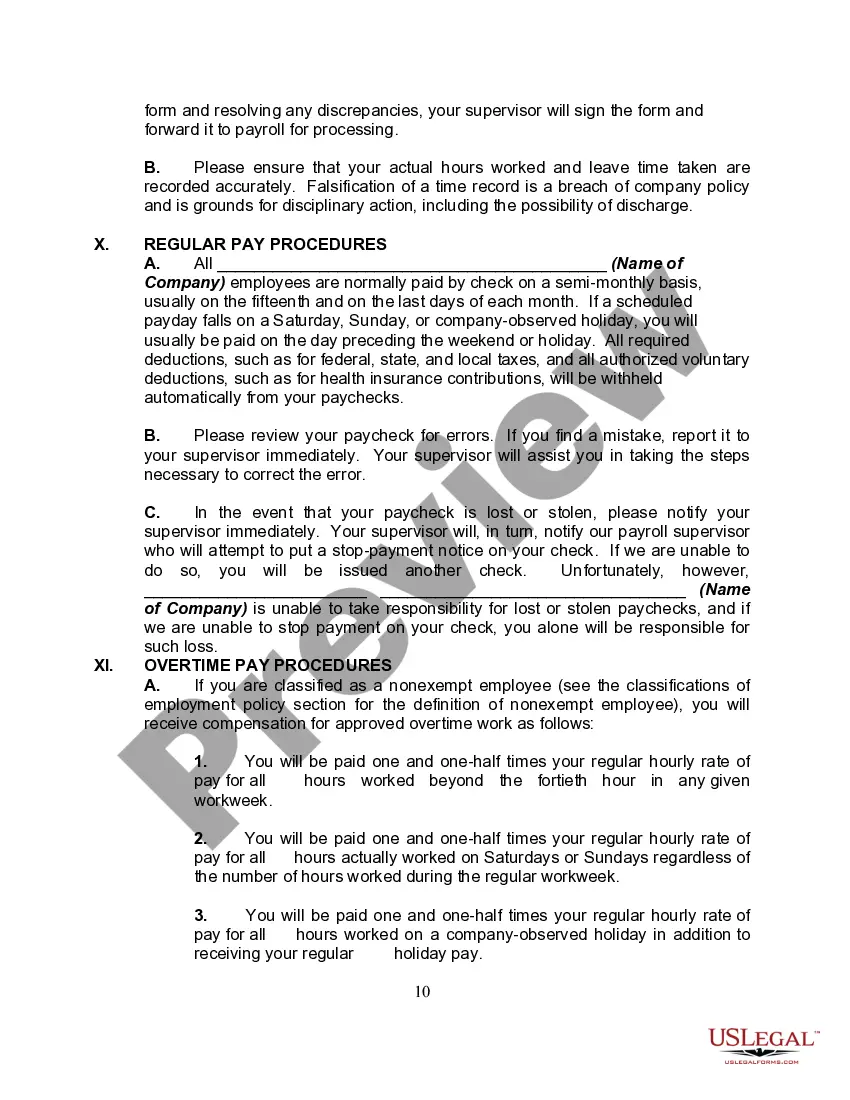An employee handbook is a manual that contains an employer's work rules and policies. It can also contain other information that is useful to the employee, such as the business's history, its goals, and its commitment to customer service.
Whether to have a handbook should depend largely on the size of your business. If you have only a handful of employees, the time it would take to assemble a handbook probably won't be worth it. However, you may still want to have some kind of written document to communicate your general work policies to employees - perhaps a one-page document would be sufficient.
If you have 10 or more employees, you might want to put a simple handbook together. Some employers feel that handbooks can pass on valuable information to your employees, such as:
what you expect of them and what they can expect of you
what your business's service policy to customers is
what place your business has in the community and the industry
what makes your business a good place to work
Clark Nevada Personnel Manual, Policies or Employment Handbook is a comprehensive document that outlines the rules, regulations, policies, and procedures governing the employment relationship between Clark Nevada and its employees. This essential guide serves as a valuable resource for both parties, providing clear and concise information to ensure compliance, efficiency, and a harmonious work environment. The Clark Nevada Personnel Manual contains a myriad of employment policies and guidelines designed to address various aspects of employment, including but not limited to: 1. Code of Conduct: This section outlines the expected ethical behavior, professionalism, and integrity that employees are required to uphold, promoting a positive working environment. 2. Non-Discrimination and Equal Employment Opportunity (EEO): Clark Nevada values diversity and strictly prohibits any form of discrimination or harassment based on race, color, religion, sex, age, national origin, disability, or any other protected characteristics. 3. Employment Classification: This section defines the different types of employment at Clark Nevada, such as full-time, part-time, temporary, and contractor roles. It also clarifies eligibility for benefits, work hours, and other relevant details. 4. Compensation and Benefits: This segment explains the company's policies regarding salary, bonuses, promotions, performance evaluations, paid time off (PTO), employee benefits (such as healthcare, retirement plans, and wellness programs), and reimbursement procedures. 5. Leaves of Absence: Clark Nevada recognizes the importance of work-life balance and provides guidelines for various leaves, including sick leave, family and medical leave, jury duty, bereavement leave, and military service leave. 6. Workplace Health and Safety: The company prioritizes the safety and well-being of its employees. The manual provides information on occupational safety, emergency procedures, reporting incidents, and compliance with relevant health and safety regulations. 7. Performance Management: This section outlines the company's performance appraisal process, goal setting, feedback mechanisms, and career development opportunities, fostering a culture of continuous improvement and employee growth. 8. Technology and Data Usage: Clark Nevada acknowledges the significance of technology and lays out guidelines for proper use of company-provided equipment, software, internet access, social media, and protection of sensitive data. 9. Grievance and Complaint Procedures: In the event of conflicts or concerns, the handbook offers clear procedures for employees to raise grievances, ensure fair investigations, and maintain confidentiality while addressing complaints. 10. Work Schedule and Attendance: This section details expectations for punctuality, attendance recording, request for time off, flexible work arrangements, telecommuting, and adherence to applicable laws and regulations. Note: It is crucial to verify the specific content and policies outlined in the Clark Nevada Personnel Manual, as organizations may have different variations or updates based on state laws, industry requirements, and company-specific regulations.















